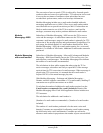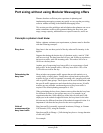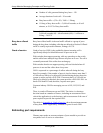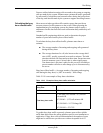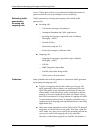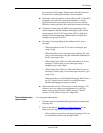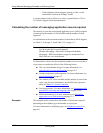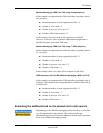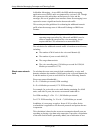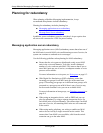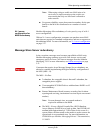
Port Sizing
November 2004
Avaya Modular Messaging Concepts and
Planning Guide
12-27
Modular Messaging—MSS (Aria TUI) using analog telephony
In this example, an organization has 5600 subscribers, requiring a total of
96 voice ports.
! Maximum number of cards supported per MAS = 4
! Number of voice cards = 8
! Number of ports per voice card = 12
! Number of MAS units required = 2
In this example, four voice cards will be required on each MAS.
However, to allow for future expansion, administrators might want to
distribute the ports across three MAS units.
Modular Messaging—MSS (Aria TUI) using T1 QSIG telephony
In this example, an organization has 5300 subscribers, requiring a total of
92 voice ports.
! Maximum number of cards supported per MAS = 3
! Number of voice cards = 4
! Number of ports per voice card = 23
! Number of MAS units = 2
In this example, three voice cards will be required on each MAS.
QSIG telephony with Find Me (Modular Messaging—MSS; Aria TUI)
In this example, an organization has 5300 subscribers requiring a total of
150 ports. This is based on the assumption that two-thirds of calls result in
a Find Me call.
! Maximum number of cards supported per MAS = 3
! Number of voice cards = 7
! Number of ports per voice card = 23
! Number of MAS units = 3
Evaluating the additional load on the network and e-mail servers
Implementing Avaya Modular Messaging results in the flow of voice data
over the organization’s data network. This section provides the
information required to calculate the additional network traffic generated
by an Avaya Modular Messaging system.



